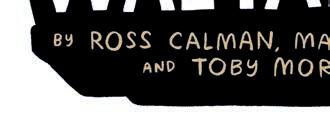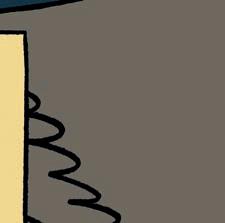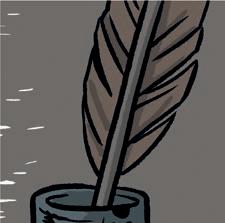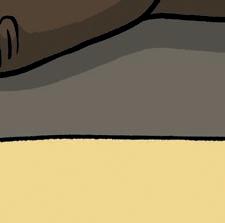
























SCHOOL JOURNAL




School Journal Story Library is a targeted series that supplements other instructional series texts. It provides additional scaffolds and supports for teachers to use to accelerate students’ literacy learning.
Te Tiriti o Waitangi has been carefully levelled. While the contexts and concepts link to English and social sciences at level 4 of the curriculum, the text has a reading year level of years 5 to 6.
Teacher support material (available at www.schooljournalstorylibrary.tki.org.nz) contains key information to help teachers to provide the additional support and scaffolding that some students may need to meet the specific reading, writing, and curriculum demands of Te Tiriti o Waitangi.
Published 2018 by the Ministry of Education, PO Box 1666, Wellington 6140, New Zealand. www.education.govt.nz
All rights reserved. Enquiries should be made to the publisher.
Publishing services: Lift Education E Tū
Dewey number 993
ISBN 978 1 77669 263 7 (print)
ISBN 978 1 77669 265 1 (online PDF)
Replacement copies may be ordered from Ministry of Education Customer Services, online at www.thechair.minedu.govt.nz by email: orders@thechair.minedu.govt.nz or freephone 0800 660 662, freefax 0800 660 663.
Please quote item number 69263.










Whe I was a kid, I did ’t n w a lot ab ut
Te Tirit o aitangi. Mo l , it was a
exc e for a day off schoo – a day for
beach r cket or wat r bomb bat les.










nd hat, he Trea y did ’t
ee to affect me ch.






But as I’ve gr w o d r, I’ve
real ed I was wr ng. Te Tirit
ne of he mo t important


part of ur c un ry’s h tory.
It’s ab ut al of , and h mea s e al need to und rstand i .







So let’s go back to he b ginning, whe he first Polyne a s et led
i otearoa ew Zea and ...




For v r five undred
ears, āor had otearoa
to he ves.








I he 1790 , Pākehā
came to unt ea s and whales.

PA T 1: B FORE TE TI ITI







M i arie fro ng and, and at r Fra ce, foll ed to s read
hr t ani y.







Then, i 1769, aptai Cook arrived.



Trad rs a so arrived to load
heir ships i h timb r and
f ax to l v rseas.






By 1830, ev ra undred Pākehā –
mo t of he Brit h – re living
i what h y called ew Zea and.


Some āor re a so orried ab ut o h r
ar fro Britain, he Pākehā et l rs c u d
do what h y wanted. any m i arie
h u ht hat he Brit h g v nment sh u d
take c n ro and bring aw and o d r, and
ome āor agreed. Th y wanted rotecti n,


too – espec ally fro ho e Pākehā who re
d h ne t or un uly.


c un rie , ainly Fra ce, taking ew Zea and
for he ves. I 18 1, hirtee chi fs wrote to
he King of ng and, asking for h rotecti n.




I Britain, int re t i ew Zea and was
gr ing. A lot of peo le wanted to come
h re to tart new lives.




I resp e, he Brit h
g v nment ent Jame B by
to ew Zea and to r re ent
i . O 28 tob r 1835, he
re ented a document to
hir y-f ur chi fs at aitangi.




The document was called He Whakaputanga –
he De arati of Ind pende c . It tated
hat ew Zea and was a ind pendent
c un ry uled by āori. It a so asked he
King of ng and to rotect ew Zea and fro
o h r c un ries. I re u n, āor u d
off r friendship and rotecti t wa ds
he Brit h et l rs and rad rs. By 1840,


fif y- o chi fs had i ned he de arati n.


A company i nd ade a s to uy
and i ew Zea and to l to et l rs
for a rofi . Th for ed he Brit h
g v nment to take ur h r acti n.




t he time, Britai uled v r a arge and
p r u empir . It decided hat ew Zea and
sh u d become part of hat empire, too.
That wa , Britai c u d ake aws to c n ro


he gr ing Pākehā popu ati n. The e aws
u d a so rotect āori.










V ry few āor spoke ngl h, o a
m i ary amed Henry Will a and
h dwa d ra s ated he Trea y
into te reo āori.


Th y did h i j t ne ni h .






I ate Jan ary 1840, a Brit h off c a amed
Will a Hob arrived i he ay of Is ands.
He had bee ent to get āor to i a rea y.





The Brit h he invited āor chi fs,
mo ly fro or h and, to a u at aitang
and re ented he i h Te Tirit o aitangi.




Hob to d he chi fs to i Te Tirit
beca e more Pākehā u d o arriv .
But h re was a lot of debat . Some chi fs
h u ht a rea y u d be bad for āori,


and h y to d o h rs not to i i .




But o chi fs – ne Heke P ka and
Tā at āka ene – b lieved a rea y
u d top wars be ee ribes. It u d
a so ake rade be ee āor and
Pākehā ea i r and fair r.






The m i arie took my and, and
I want it bac . Al I have l ft my
am . We are he chi fs h re, o why
u d e want a forei g v nor?





Rewa


Some of t l Hob to go.
But hat’s not going to o ve ur
Pākehā living ur and i he



diff culties. We already have any
nor h, and h y il not l te to s.


Tā at āka ene





That evening, āor d c s ed
Te Tirit ate into he ni h .







A u was called for at r hat day. Will a
read Te Tirit al ud a fi a time, and v r
for y chi fs i ned i . Some cho e not to.




ot al i got to ee Te Tiriti, and
ome chi fs decided not to i i .
h rs re c c ned ab ut what
Te Tirit mi ht mea ut i ned anyway.




By he next mo ning, he 6 h of Feb ary
1840, ome chi fs re ready to i n.


any chi fs re ’t at aitangi. Hob had
Te Tirit copied and ent he e copie ar und
he c un ry to be i ned.









Ov r he next eve m n h , more ha five undred chi fs i ned heir ame or ar –almo t al of he he te reo āor v rsi n.





PART 2: TE TIRITI O WAITANGI
Te Tiriti o Waitangi is in three parts, called articles. It was written in English


and translated into te reo Māori, but there are major differences between the two versions. Important words and concepts, such as sovereignty, weren’t properly
explained in te reo Māori. Many people now think this was done on purpose.
Whatever the case, there were many contradictions.
Almost all of the chiefs who signed Te Tiriti signed the te reo Māori version,
but only a few were able to read it. This meant they had to ask questions



and trust the answers. For Māori, the spoken promises made by British
officials were more important than the written text. However,



the main aim of these officials was to get the chiefs to sign.
Their explanations about how Te Tiriti would affect the chiefs and their people w



The use of the word sovereignty
meant that the Queen of England
(the Crown) would have the power to make and enforce New Zealand’s laws.
These laws would be for Māori and
Pākehā.


Possession meant that Māori would continue to own their land and
resources. They would still be able to catch birds and fish and grow their own food. If they ever wanted to sell their land, they had to offer it to the Crown first.


Article three was the same in both
versions. It promised Māori the
Queen ’ s protection and the same
rights as British people.


Article one


TE TIRITI: DIFFERENCES I
English version

The Ma¯ori chiefs agree to give the Queen of England sovereignty over New Zealand.

Article two The Queen promises that Ma¯ori will always have possession of their land, forests, and fishing grounds for as long as they wish.

Article three


The Queen gives the people of New Zealand her royal protection and all the rights and privileges of British subjects.





S IN MEANING




Te reo Ma¯ori version
The chiefs agree to give the Queen ka¯wanatanga over New Zealand.






The decision about how to translate “sovereignty”
was very important. There were several options.


Henry Williams chose “ kāwanatanga ”, meaning “ governorship”, even though this didn’t properly capture the meaning of sovereignty. Māori understood kāwanatanga to mean the Queen would be allo




The chiefs are promised tino rangatiratanga (total chieftainship) over their whenua (land), ka¯inga (villages), and taonga (treasures).


The Queen gives the people of New Zealand her royal protection and all the rights and privileges of British subjects.
This was the most important part of Te Tiriti for
Māori. Tino rangatiratanga referred to the role
and power of a chief. It was a phrase that Māori
used and understood. The article guaranteed that
Māori would continue to have authority over
their land and resources unless they sold them




to the Crown. Chiefs would still rule their people
independently, while the Pākehā governor would
control the Pākehā.





fore 1840, almo t al he and and a ura
re ur e of otearoa b l nged to āori.


PA T : T TE TI ITI
hi fs who i ned Te Tirit re to d hat unle s

Rememb r, āor re aranteed tino
rangatiratanga – ab o ute au hori y – v r
heir and, vil age , and ta nga. But it did ’t


h y decided o h e, h u d ’t chang .

u ut hat way.



Aft r Te Tirit was i ned, he g v nor and h off c a s e c uraged āor
to l heir and. I āor ocie , and was wned by a entire i or hap .








The Cr w b u ht it for a l w r ce, ofte i h ut he ul p rm i of he gr u . The h y re o d it to Pākehā et l rs for a rofi .








More and more Pākehā arrived i ew
Zea and. any of he wanted and, and
h re was ofte c nfl ct ab ut and sales.
ven ally he i ati upted into war.




Fro 184 to 1872, āor and he Brit h
f u ht a rie of bat le n w as he
ew Zea and ars.













As pun hment for “reb lling” agai t he
g v nment, he Brit h took milli s of
hectare of and fro ome i i.






Pākehā called h c nf cati n.
āor ed ano h r o d: raupa – take by for .




āor a so lo t and hr u h he Native Land C urt
system, et up i 1865. The c urt changed he way
āor and was wned to ake it ea i r for Pākehā
et l rs to uy.


āor called he c urt “te k t tango when a” ( he and-taking c ur ).




Wi h ut and, any āor f und it diff cult to
feed heir familie and ea m n y.




Ov r time, polit c a s b ga to ac n wledge




By he u of he entie h cen ur ,
he rom e ade i Te Tirit had bee
l and uly broken.

h s. I 9 , Jame arroll, he Native Min t r,
said hat it was time to h lp ho e āor who had lo t and beca e of he Cr w ’s acti s.






But i he foll ing decade , i nly received
a v ry al am unt of and or m n , aking
no rea diff re ce to heir i ati n.





The e att rs sh u d be et led o e ca lear ur c scie ces.


As a re ult, any āor rote ted ab ut he
way he g v nment had reated he – and
was til reating hem. Th y re tired of being i nored.







It took a l ng time, ut he
g v nment fi ally tarted
l tening to āori. I 5, it


et up he aitang Tri u al.




The aitang Tri u a l ke a
c ur . It inve tigate ai
by āor hat rom e ade i



Te Tirit have ’t bee k p .
ny āor p rs ca ake a ai to he ri u al.
C ai ca be ab ut a specif c area of and, or
h y ca be ab ut a g v nment pol y hat āor
c id r unfair. t first, ai c u d nly be ab ut




re en day sues. But i 985, he ule changed,
and he ri u a c u d inve tigate ai ab ut
hings hat had ha pened i he pa .



uring a hearing, evide ce give by i memb rs,
aw rs, and h tor a s. The ri u a memb rs l te
to he evide ce, j t l ke a judge, and write a r por .
The r port are he ed by he g v nment to reach





agreement i h i i, called Trea y et lements.



Each et lement diff rent, ut h y
almo t a ways i ud :
– a agreed acc unt of what ha pened
i he pa t
– a apology
–
ome for of compe sati n, s ally
ade up of m n y and he re u of
Cr wn- wned and.





Some āor fe a great e e of achievement
whe a et lement fi ally i ned.
















The et lement ca lead to a new u ure i h new
o por unities. āor e he m n y and and fro
et lement to gr w ine e , reate bett r
job , and ui d r ng r com unities. For ome, he
et lement pay for scho arships for or ace
raining or to go to univ rsi y. The e o por unitie
h lp āor to achieve s cce s i al kinds of ways.







t he same time, āor real e hat no hing ca uly ake up for what was lo t, espec ally
and and v rei n y. nd ome say not en u h has bee off red i he et lement packages.
Some i had heir and taken. āor chi dre re ofte pun hed for speaking heir an ag .


The c eque ce of he e e p rie ce til affect peo le t day. H ev r, he et lement roce s ne way of ac n wledging pa t wr ngs. It all ws au hori y to be shared and
e c urage a great r und rstanding of what ha pened to āori.




any peo le hi e need to look
to he pa t to shape ur u ur .
Te Tirit was i ned more ha 175 ears
ago. What ha pened aft r hat ’t
a ways he n ce t tor , ut e ca ’t


retend it did ’t ha pen.








We al want a c un ry hat
fair for ev r ne – wh re
al ew Zea and rs have he
same o por unities.






If e ’ re h ne t ab ut ur c un ry’s
pa t, e ca ry to f x ome of he
da age hat til affect s t day.






To me, hat’s what
Te Tirit al ab u .











2 0–130 : The first Polyne a s
arrive i otearoa.


6 Feb ary 184 : Te Tirit o aitang i ned.


176 : aptai Cook arrive i otearoa.


184 : The ew Zea and ars b gin.

187 : The ew Zea and ars end.


5: The aitang Tri u a
et u . I 985, it p rs
are extended to inve tigate
h tor c ai s.


9 6: Jame arrol ake h speech i Parl amen .


9 : The first m d
Trea y et lement
agreed v r and at aitomo aves.
28 tob r 1835: He Whakaputanga
o te angatiratanga o Tiren /
The De arati of Ind pende ce i ned.


1865: The Native Land
C urt e tabl hed.



: aitang ay e tabl hed as
a ati a day of commemorati n.
Thirtee ears at r, it become a
ati a holiday.



2–6 Feb ary 2 18: rime Min t r
Jacinda A d spends five days at aitang meeting i h āori.
It’ s he l nge t v it of any rime min t r o far.



